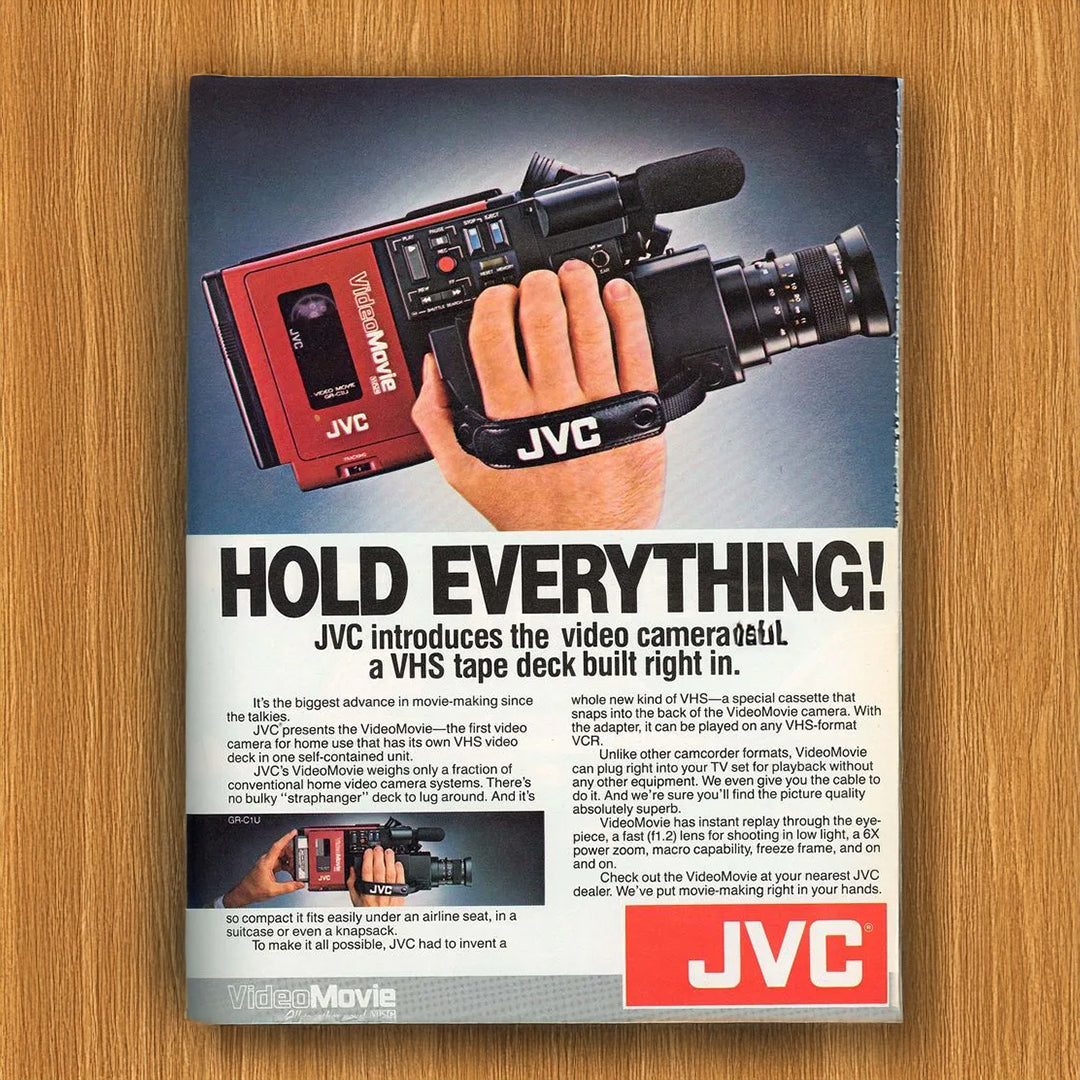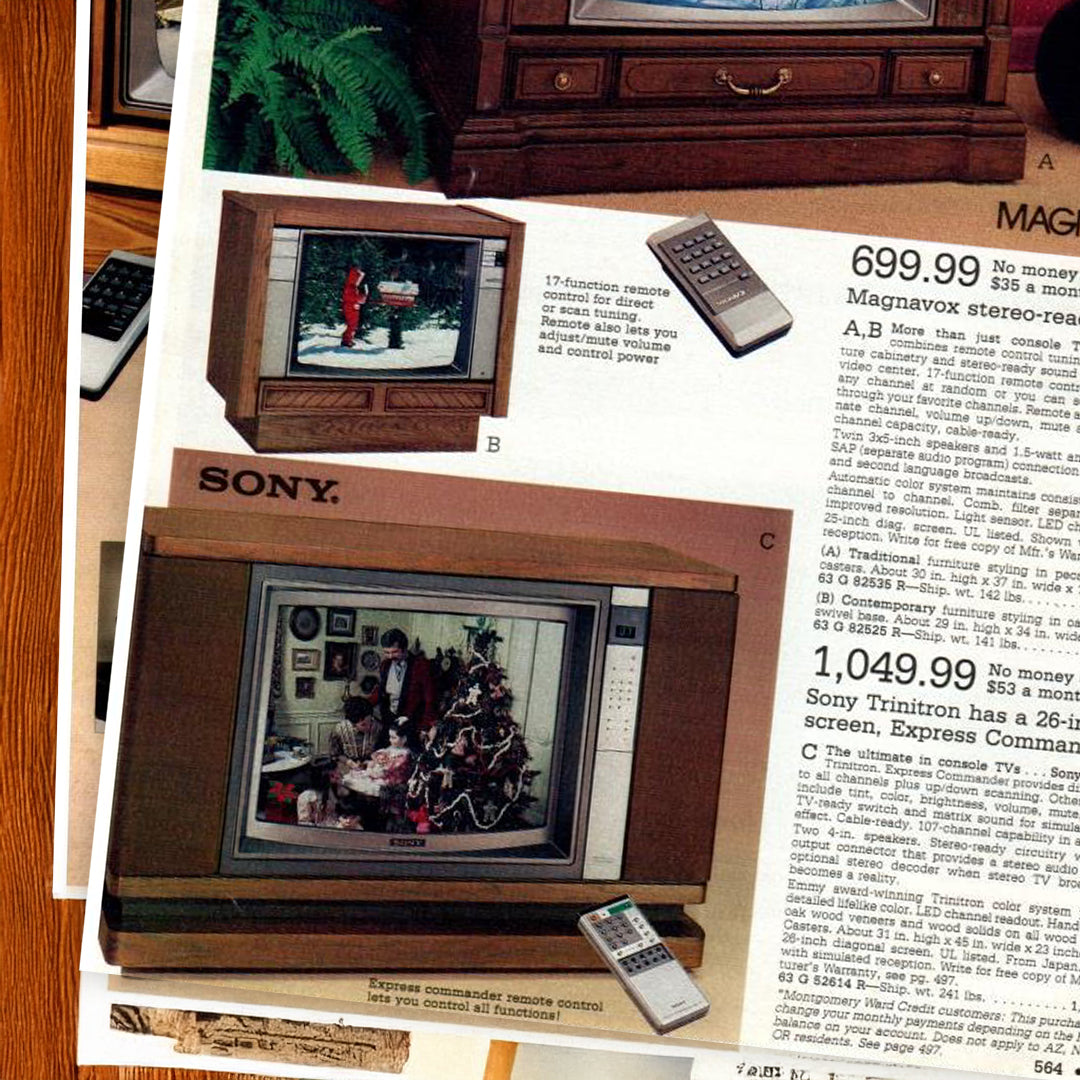
From Home Video Hits to Timeless Toys and Cutting-Edge Tech.
The JVC GR-C1 camcorder was a highly sought-after gift during Christmas 1984 due to its groundbreaking features and cultural significance. As the first all-in-one VHS camcorder, it allowed users to record directly onto a VHS-C tape without needing an external recording device. Its ability to instantly play back footage on a connected TV was another revolutionary feature, setting it apart from competitors like Sony's Betamovie
Adding to its appeal, the GR-C1 gained iconic status later on as the camcorder used in Back to the Future (1985), where it was depicted as a "portable TV studio."

The Sony Watchman FD-30, launched in 1984, was a compact, handheld TV with a black-and-white CRT screen and built-in AM/FM radio. It offered portable entertainment, making it a hit with tech-savvy consumers and those wanting on-the-go TV access.

The Sony KV-2649R 26-inch Trinitron CRT television was a standout in Sony's lineup for its time. It featured a sharp and vivid picture quality, thanks to Sony's patented Trinitron technology, which was renowned for its color accuracy and brightness. The Sony KV-2649R was a 26-inch Trinitron CRT TV notable for its vivid picture quality and color accuracy, thanks to Sony's Trinitron technology. It featured a remote control (RM-708) and catered to high-end home entertainment needs.

In 1984, Sears offered a front projection television, which was one of the early entries into the home theater projection market. The model had a 50-inch diagonal screen and featured a reflective mirror design. This was positioned as a luxury product, designed for those looking to create a more cinematic experience at home.

The GE 1CVT645 VHS recorder was designed to be dockable in part due to its modular design, allowing it to function as both a portable recording device and a stationary unit when needed. This feature made it especially practical for users who wanted the flexibility to record on-the-go and then easily dock the unit to a larger setup, such as a TV or more stable recording station for playback or editing. The dockable design made it more versatile in a time when portable video recorders were becoming increasingly popular.

The 1984 VHS release of Purple Rain was a groundbreaking success, marking a pivotal moment in home video history. Priced at $29.95—a relatively low price for the time—it sold 435,000 units by the end of the year and earned platinum certification from the RIAA. Its release while the film was still in theaters helped capitalize on the movie's box-office momentum, reflecting Prince's immense popularity. This strategic pricing and timing positioned Purple Rain as one of the most successful and influential home video releases of the era.

The VHS of Making Michael Jackson's Thriller, released in late 1983, became a groundbreaking home video success by 1984. It was the first VHS music video to be marketed for purchase rather than rental, priced at $29.95.
By leveraging Michael Jackson's immense popularity and the cultural impact of the Thriller music video, the tape sold over one million copies within a few months of its release, making it the highest-selling music video of its time. The success of this release also influenced the evolution of the home video industry, demonstrating the viability of consumer-priced videos.

Though released a year earlier, Raiders of the Lost Ark was a significant success in the home video market, particularly on VHS. Paramount's strategy of pricing the tape at $39.95—much lower than the industry standard—helped make the release accessible to a broader audience. By September 1985, over 1 million copies had been sold, cementing it as one of the top-selling VHS titles of its time. The tape's affordability and the film's enduring popularity contributed to its dominance in both sales and rentals, making it a staple in video stores across the U.S. and Canada.

In 1984, department stores offered a Return of the Jedi-themed sheet set for kids, which was part of their licensed Star Wars merchandise lineup. These bedding sets typically featured vibrant prints of characters like Darth Vader, R2-D2, Ewoks, and Jabba the Hutt. The sheets were designed to appeal to young fans of the franchise, allowing them to bring their Star Wars enthusiasm into their bedroom decor. This sheet set was a popular item in the Sears catalog, leveraging the massive success of Return of the Jedi in 1983 and the enduring appeal of the Star Wars saga.

Transformers toys were one of the hottest selling items for Christmas in 1984. Released by Hasbro, the Transformers toys became an instant sensation thanks to their innovative design, combining action figures with transforming vehicles and robots. These toys tied into the success of the animated Transformers TV series, which launched in 1984.


